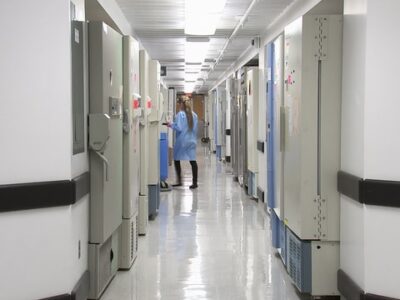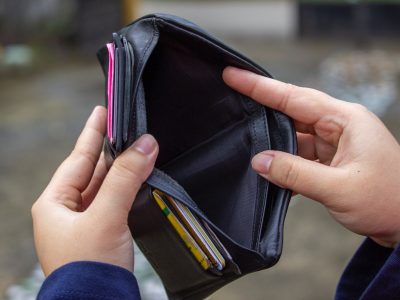Does He Care About Small Business? We Dig Deep.
California is the largest state in the union and the sixth largest economy worldwide, and like most of the world, it’s currently on lockdown. CA Governor Gavin Newsom recently outlined his plan for reopening the state’s economy, but many businesses will need to wait at least several months before they can get back to work. The number of cases and hospitalizations in the state has stabilized over the last few days – a promising sign that the state may prepare to reopen for business.
However, some small businesses owners feel that they should be able to open sooner, rather than later, as long as they comply with the latest social distancing guidelines. As some stores and shops get ready to open and others remain closed, the shutdown is creating winners and losers across the state. The population is wondering why stores such as Target can be widely open for business while smaller shops and restaurants who can take the same measures are staying closed.
The Current Plan to Reopen California
The governor is facing pressure to reopen the economy as fast as possible, which he says he will only do when the data shows that it is safe to do so. He says the state needs to do six things before it can safely reopen:
- Expand testing to identify and isolate new cases
- Maintain vigilance to protect seniors and high-risk people
- Gain the ability to handle future surges in hospitals with a “myriad of protective gear”
- Continue to collaborate with academia on therapies and treatments
- Redraw regulations to ensure continued physical distancing at private businesses and schools
- Develop new enforcement mechanisms to allow the state to pull back and reinstate stay-at-home orders.
Once these goals have been achieved, the state will start reopening the economy in four stages. California is currently in stage one, which includes staying at home as much as possible and keeping nonessential businesses closed to flatten the curve.
The second phase will include opening some low-risk nonessential businesses, including retail stores, offices, and manufacturing facilities, where working from home is not an option. Workers would still need to stay six feet apart from one another in these settings. Childcare centers would also be included, so parents can start going back to work.
The third stage will involve reopening schools, spas, salons, and other higher-risk businesses where workers and customers need to be in close contact with one another. This stage may still be several months away. Gov. Newsom has considered the idea of sending kids to school in July or August to start the new school year off as soon as possible.
The fourth stage will include opening major public events including concerts, festivals, and sporting events that can easily draw tens of thousands of people. The fourth stage will require therapeutics or even a potential cure for the virus, which could still be over a year away.
As the state moves through these various stages, businesses and facilities will need to adjust their operations to make sure they are keeping their employees safe, or shelter-in-place orders may be reinstated to prevent another outbreak. This includes regularly wiping down public surfaces, making sure employees have access to protective gear, and limiting occupancy levels.
What is Driving Newsom’s Agenda?
While public safety is key, the fairly new Governor seems to be staying aggressive in his approach, with some alleging his move is purely political. And while the Governor keeps touting “science and data” in almost every speech he gives, we’re yet to see concrete science or data from his office on what is suggesting such a radical timeline. In a report via the New York Times, as of April 22nd, the U.S death rate was 12 deaths for every 100,000. In California specifically, the rate is 3 deaths per 100,000. Influenza has a death rate of 14.9 per 100,000. California has kept its death rate low in comparison to New York, yet also had more than double the flights to China in January, but implemented stay-at-home procedures first.
Some business owners are expressing outrage over these new policies. Spas, salons, and other smaller nonessential businesses may have to wait months before they can reopen, and many of them may never come back at all.


Lawsuit
In a recent lawsuit “Gondola Adventures vs. Gavin Newsom,” several nonessential businesses in Southern California are suing Newsom and the state. They claim these shelter-in-place orders are unconstitutional and that they should be allowed to reopen if they follow social distancing guidelines. Phase-3 businesses are on hold until further notice, considering employees need to be close to their customers to perform certain services. Yet, business owners argue they can wear face masks and gloves to protect themselves on the job while still going about their business as usual.

The Hunt for PPE
Virus testing and personal protection equipment are both vital to the reopening of California. Healthcare workers and business owners need to be able to test their employees for the virus, while protecting those that have yet to be exposed.
Gov. Newsom recently ordered nearly a billion dollars’ worth of protective gear from a Chinese electric car manufacturer known as BYD, which has firms in the U.S. as well. The company doesn’t have a history of manufacturing PPE, but it claims to have built the “world’s largest mass-produced face masks plant.” Under the agreement, California will receive 200 million masks a month, including 150 million N95 masks and 50 million surgical masks. The state just received its first shipment of masks over the weekend, and it plans to start distributing them to facilities and personnel across the state.
However, many lawmakers and members of the press would like more information about the deal. Some are worried that the masks might be defective, while others want to know what the state will do if BYD doesn’t hold up its end of the bargain. The masks also need to be inspected by the National Institute of Occupational Health and Safety to make sure they are effective.
Many were surprised to see Newsom sign such a massive deal with a foreign-based company instead of ordering masks from American companies like 3M or Honeywell. L.A. Mayor Eric Garcetti recently ordered $25 million in N95 masks from Honeywell, which cost around 79 cents per mask. Officials believe the BYD order could end up costing taxpayers more per mask.
Some have also alleged that Gov. Newsom is playing favorites. As it turns out, Ke Li, the president of the BYD automotive subsidy, gave $40,000 to Newsom’s gubernatorial campaign.
California remains one of the most closely watched states in the country as the pandemic rages on. The decision to open some business and leave others closed is frustrating. With no timeline being given, and Stage 3 and 4 being months if not over a year away, is this newly elected Governor making the right moves? Let us know what you think.

















